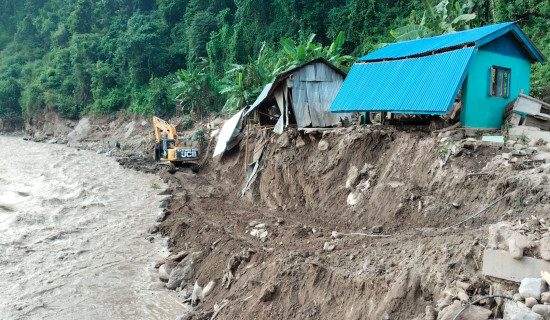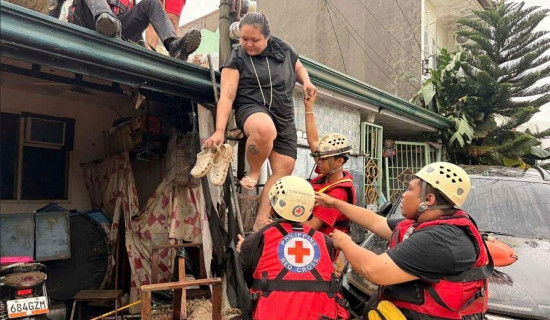- Thursday, 6 November 2025
Ensure Justice To Sushmita, Other Victims
Namrata Sharma
The world is supposed to be moving towards a modern age, but civilization seems to be challenged every day with cases of several crimes. Rape is perhaps one of the most heinous crimes that are committed every day.
In his book ‘Theories of Rape: Inquiries into the Causes of Sexual Aggression,’ L. Ellis presents feminist, social learning and evolutionary theories that can be probed to learn more about rape. The feminist theory views rape as "a pseudosexual act" used by males to intimidate and dominate women. The social learning theory sees rape as a result of the male behaviour of aggressiveness towards women. Whereas Ellis mentions that according to the evolutionary theory, rape is an extreme response to natural selection pressure which has favoured male assertiveness in attempting to copulate with numerous sex partners and has favoured females who resist male attempts to control their sexual behaviour.
Sexual behaviour
Ellis writes that a review of all aspects of these three theories and the research done indicated that no one theory is clearly superior to the other two in predicting what is currently known related to rape. He proposes a synthesis theory which reasons that rape, like sexual behaviour generally, is motivated by two largely unlearned and closely linked drives – the sex drive and the drive to possess and control. Under this theory Ellis mentions that the motivation to rape is largely unlearned but the techniques and strategies involved in committing rape are learned, largely through conditioning rather than through attitudes and imitation.
While the academics analyse human behaviours including the cause and methodologies of such heinous crimes, social and human right activists struggle to address this issue by supporting the victims and survivors and trying to put mechanisms in place to prevent it from happening. The state of impunity over several crimes including rape and all other forms of Violence against Women and Girls has been a reality in most of the South Asian countries. Currently, the fact that Manoj Pandey who is accused of rape and trafficking of a minor has been arrested and put in prison is a flicker of hope that this time justice will be provided to the victim Sushmita Regmi who has been courageous enough to fight back and bring her case out in the open.
A series of videos that she posted on TikTok became the medium of informing the world how she was misled and abused since she was 16 years old. It took her eight years to bring this out in the open. There are several people who comment flippantly on why it took her 8 years and how could it be verified if the accusation was correct or not? Anyone viewing the videos that were released can see the pain on the face and voice of the brave survivor who had hushed herself and suffered the pain for several years but came out in the open once she was ready for it.
People, who ask the question as to why she is speaking after 8 years, should realise that it must have been a very nightmarish experience for a 16-year old to internalise what happened to her after going through a lot of physical and mental trauma. Together with her bodily scars, the social, cultural and traditional taboos and discrimination that she mentions in her videos pushed her into low self-esteem and sufferings which were too big for her to evade and come out in the open easily. There must also have been economic and financial difficulties she faced which posed as barriers for her from seeking justice.
The social media has become a tool of helping victims and survivors like Sushmita to bring out crimes against them in the open. Now, it is the responsibility of the government mechanisms including the police and the public persecutors to make sure Nepali daughters like Sushmita and others who have reported being rape and sexual harassment get their perpetrators punished. Proper compensations also need to be given to the survivors for the injustice they had to bear due to lack of security from those who were supposed to protect them.
This is not the first time in Nepal that girls and women have dared to voice out the fact that they have been raped. There are few cases where the girls and women have openly brought out the issue, and there are many cases where they have privately sought legal support to get justice. However, many a times the cases get dismissed for lack of “evidence” and several other issues that prevent the victims and the survivors to get full justice.
Moral support
Unfortunately in countries like Nepal, due to various cultural, social, traditional and religious values topped with the economic and financial constraints, bringing out heinous crimes like rape and sexual harassments rarely happens. When someone tries to seek help and justice, the victims and survivors are labelled to have “bad character” or some misgivings which make them the victim. Also, to register the case and get legal support or even financial and moral support from family and friends is required. This is where the girls and women who become victims and survivors face another hurdle.
There may be various academic theories related to the cause of rape and the male psychology around it. How to understand that may be one issue. However, for now how to protect girls and women from being victims of this crime is most important. One step is to remove all forms of restrictions related to time binding for the crime to be reported. The other most important step will be to end this impunity by starting to punish the perpetrators and giving justice to survivors like Sushmita.
(Namrata Sharma is a journalist and women rights advocate and can be reached at namrata1964@yahoo.com Twitter handle: @NamrataSharmaP )









-original-thumb.jpg)







